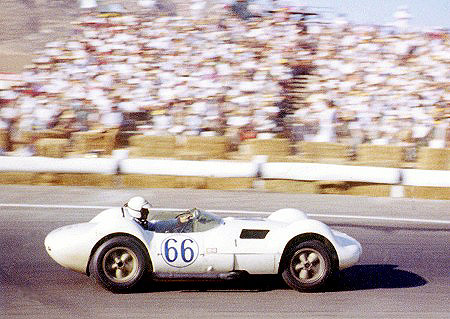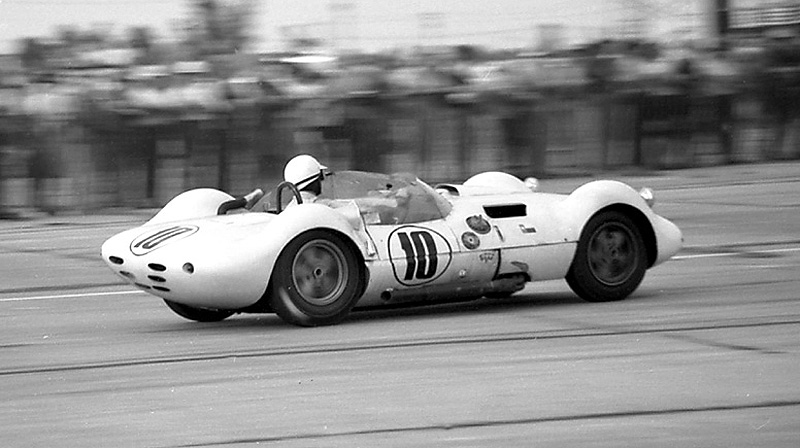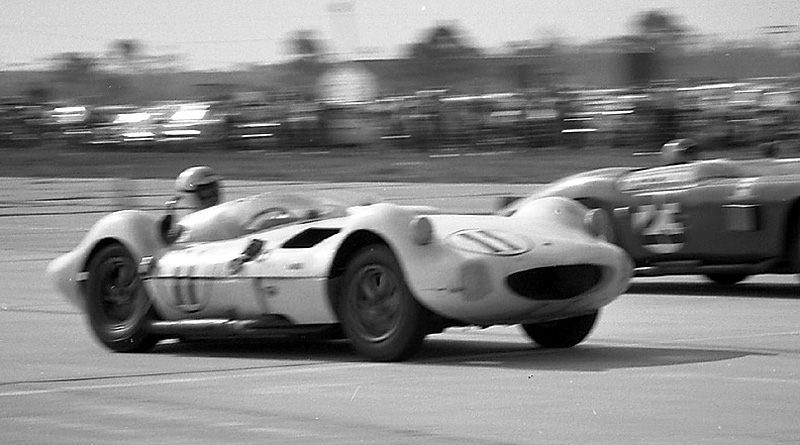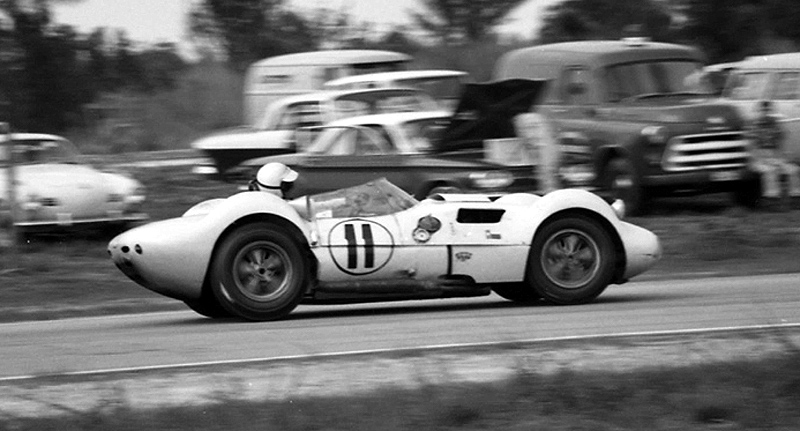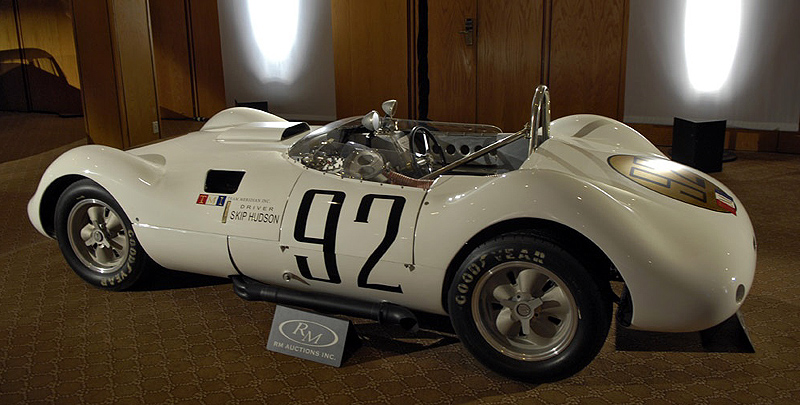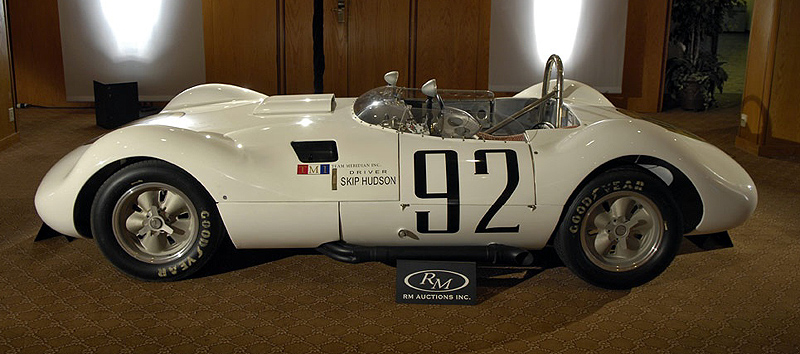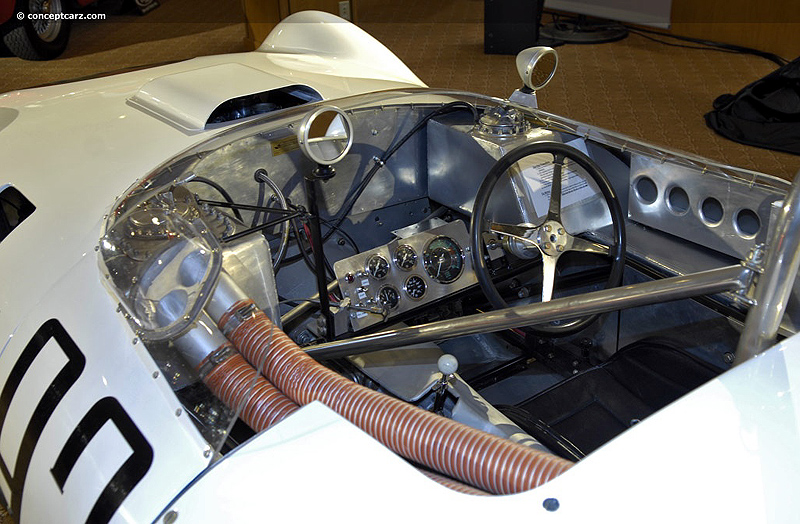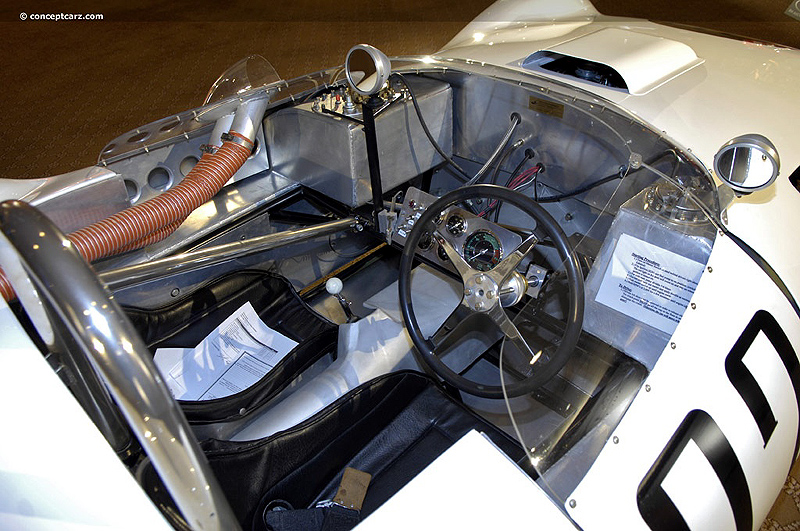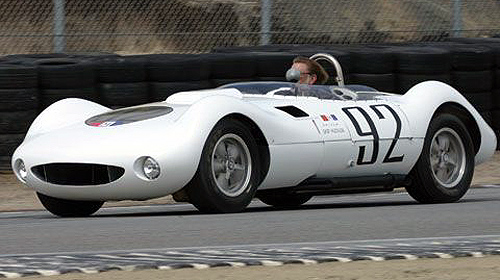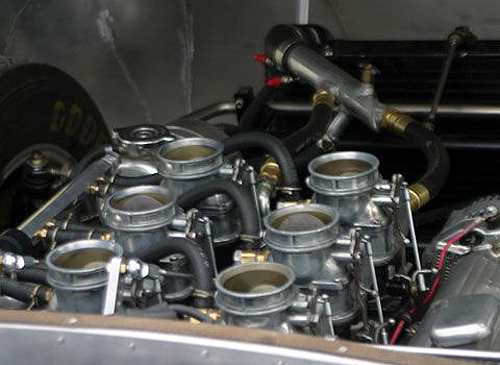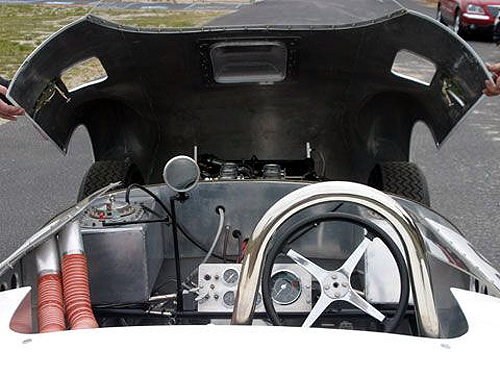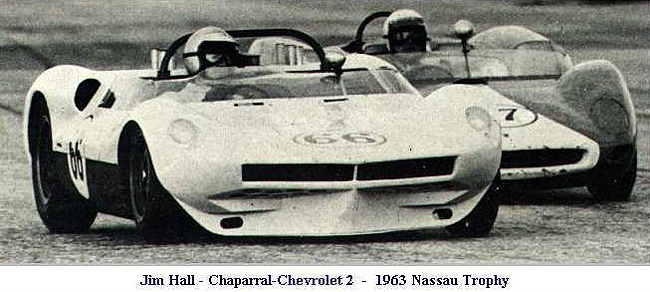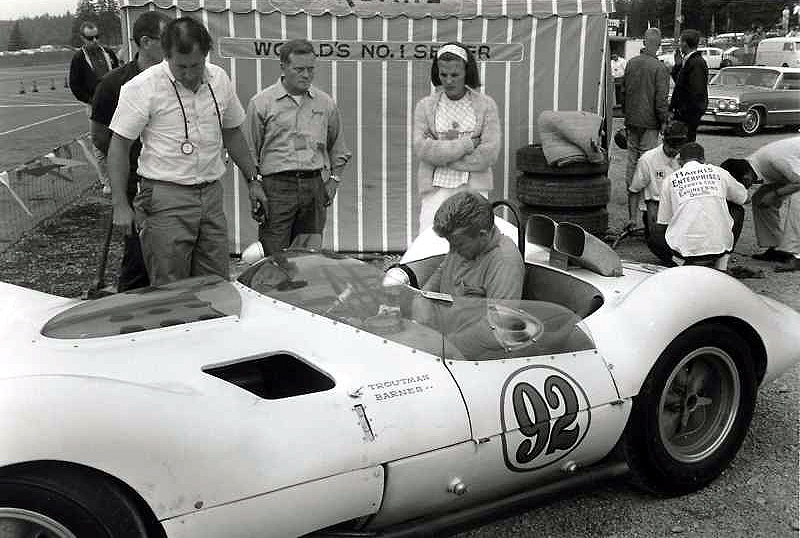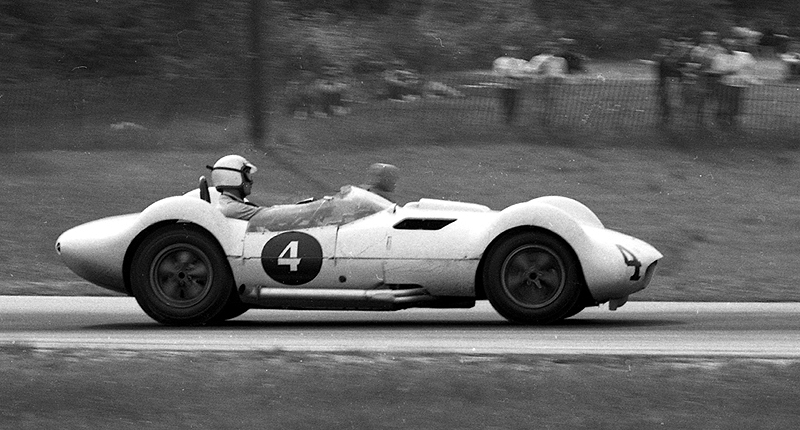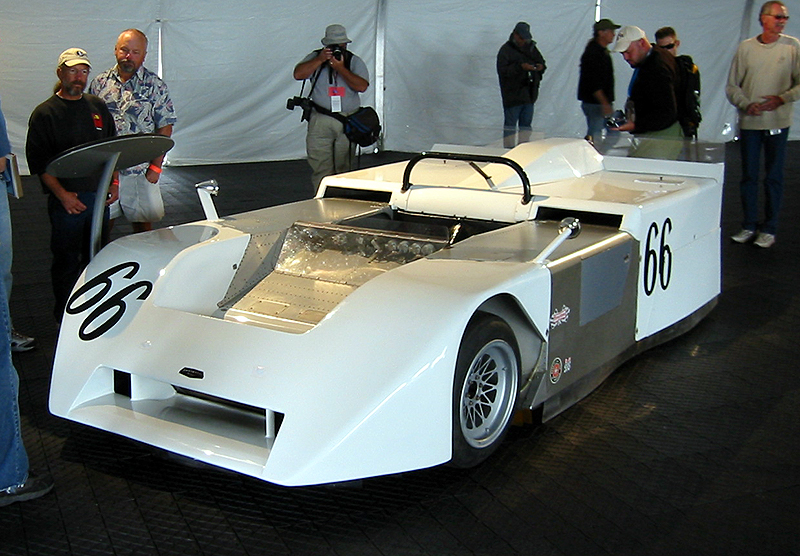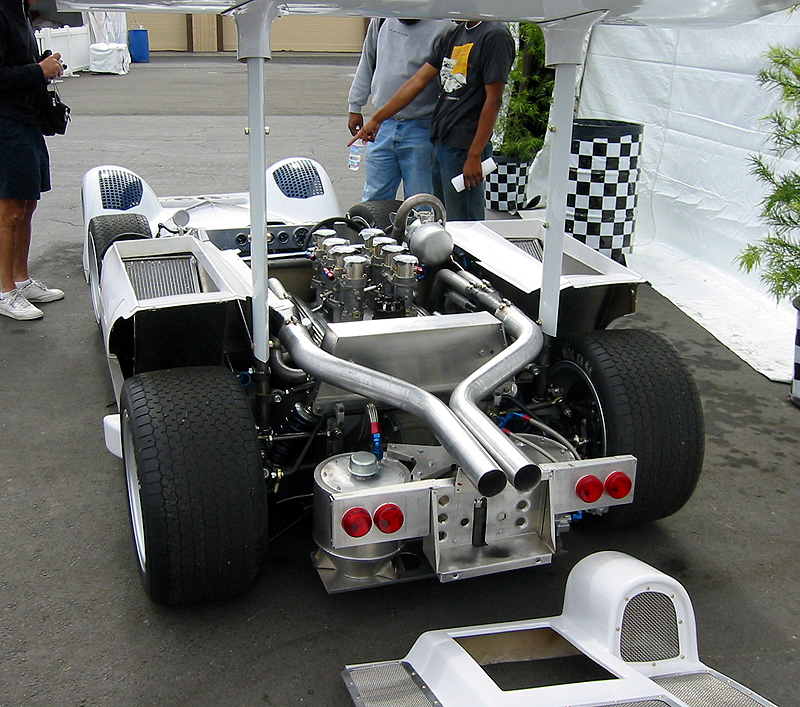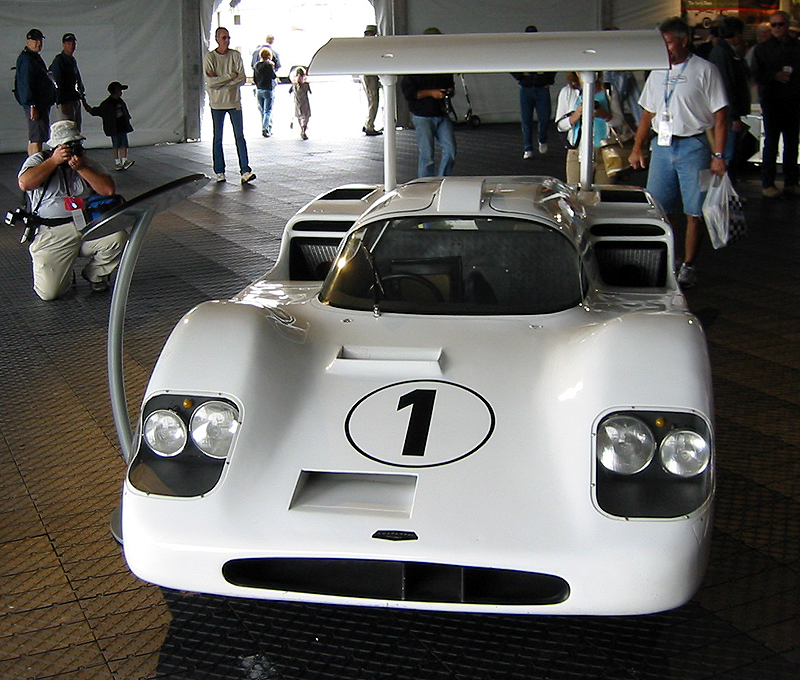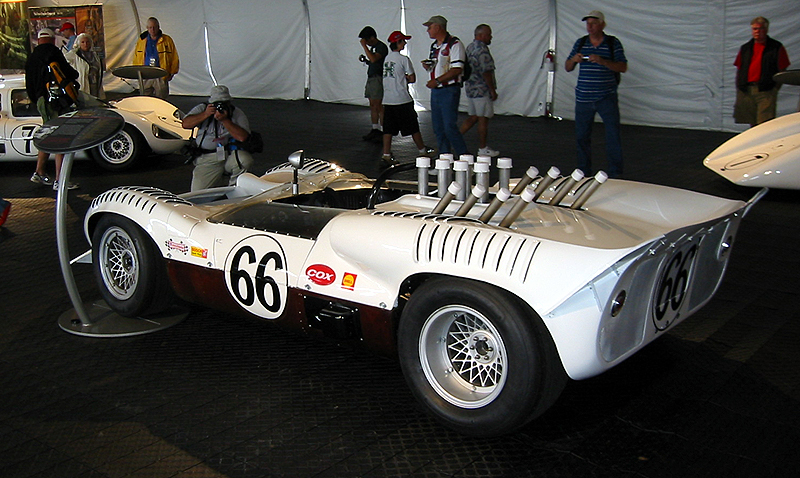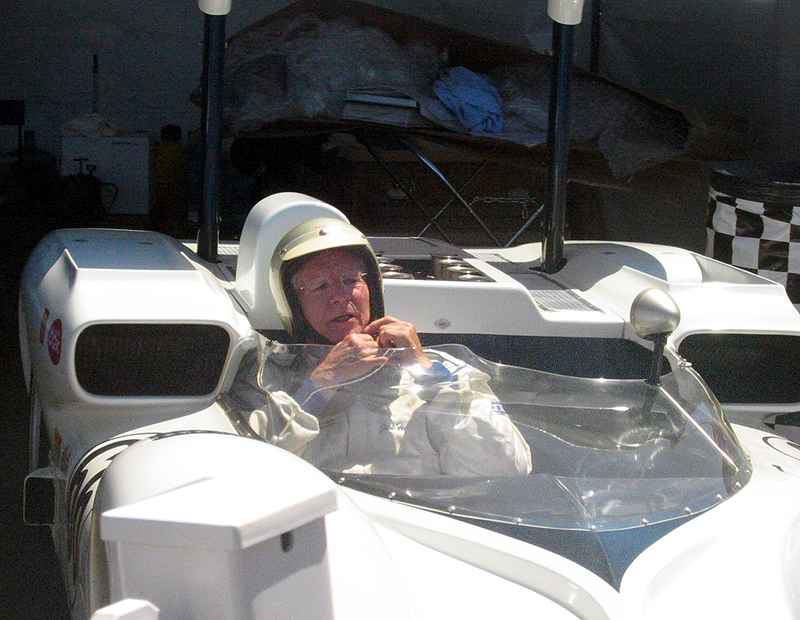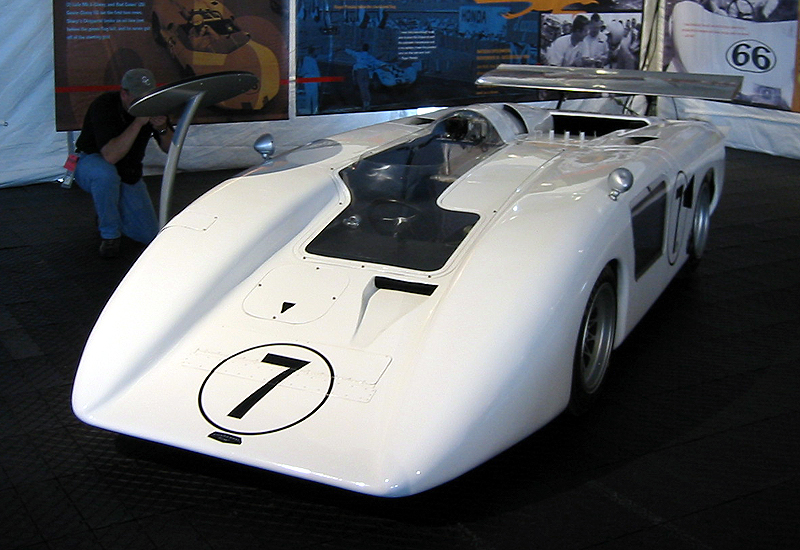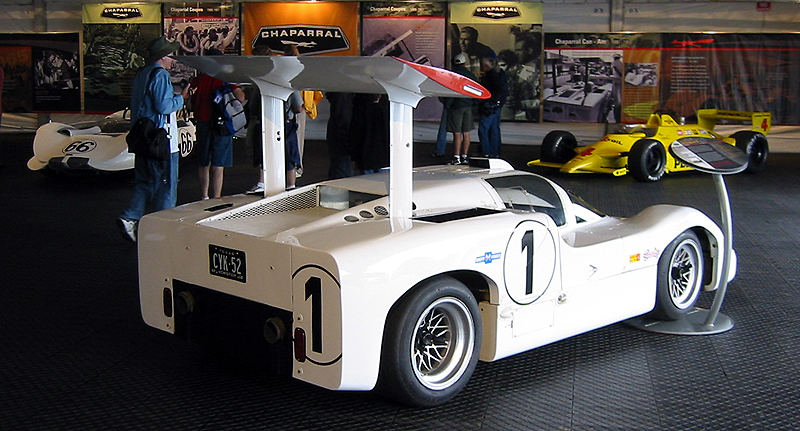Vintage 1962 Chaparral 1 Racer to be Auctioned - This is the car #92
From the February, 2009 issue of Automobile Magazine
By Evan McCausland
"Vintage race cars occasionally come up for grabs, but we can't recall the last time a Chaparral happened to change hands. Perhaps that's why seeing a 1962 Chaparral as part of RM Auctions' Sports and Classics of Monterey sale, scheduled for August 15 and 16, piques our interest.
Although the Chaparral name conjures images of Jim Hall's innovative designs, the Texan had little to do with the 1. The car was largely designed by Dick Troutman and Tom Barnes, both former Scarab designers who struck out on their own. By purchasing two cars from the duo, Hall unwittingly became a sponsor of sorts and his Chaparral brand was affixed to the car.
Troutman and Barnes ended up building five cars total, with Hall receiving chassis number 001 and 003. The car you see here is a replica of chassis 004. The original was initially sold to Chuck Jones, who lent the car out to Skip Hudson. Jones kept the car until the '80s, when a California real estate magnate bought the Chaparral 1 and had it professionally restored. "This "new 004" is a completely new car, built partly by Dick Troutman from old plans before he died. The original chassis 004, devoid of its engine and transmission, was unceremoniously dumped in the Irvine landfill circa 1971." (footnote #1).
As it stands today, chassis 004 sports a 318-cu.in. small-block Chevrolet V-8 (good for 340 hp), a four-speed manual transmission, and independent suspension at all four wheels. Better yet, the car also carries current FIA/ACCUS certification, and is eligible for vintage race events.
RM expects the Chaparral to change hands for between $750,000 and $950,000. Given that it's possibly the only Chaparral of any vintage that'll be for sale in the near future (most of Hall's collection is currently in a museum), that may be a safe bet. " The lot was sold for $522,500 including buyer's premium.
Dick Troutman and Tom Barnes worked at Kurtis Kraft where they polished their metal-smith craft and fine-tuned their engineering expertise. They were responsible for the Troutman-Barnes Mercury Special of 1952, the Reventlow Scarabs of 1957 and 1958, and the fist Chaparral of the early 1960s. They were pioneers of early American racing and helped push the classic front-engined sports racing roadsters to perhaps the height of their evolution.
Troutman and Barnes left the Reventlow operation in the fall of 1960 and went searching for a new source to back their venture. Their goal was to utilize a GM powerplant in a short wheelbase vehicle where the engine would be mounted as far back as possible, in an effort to achieve near 50-50 weight distribution. The design was basically an improved Scarab that was lower, lighter, shorter, and weighed a few hundred pounds less. The racer was to have a fully independent rear suspension, all-wheel disc brakes and centralized fuel tanks. Barnes and Troutman called it their 'Riverside Sports Racer.'
At Riverside in November, the partners found Texas oil businessman, Jim Hall. Hall had competed in his first race in 1954 driving his brothers Austin Healey 100. This was the start of a passion that would continue to flourish throughout the years. From the Austin Healey, Hall moved into a Ferrari 750 Monza that had been driven by Carroll Shelby and Phill Hill to second overall in the 1955 Sebring 12 Hour race. Other early race cars driven by Hall included a Lister, a 2.5-liter F1 Lotus, and a Maserati 450S.
Work began on this 'all-American' race car with incremental testing done at Halls race track which he had constructed south of Midland, Texas. Troutman and Barnes goal was to build five cars; Hall had purchased two of them, effectively giving them the budget to continue their project. Four cars would eventually be created with one being exported to Great Britain. Halls second Chaparral 1 was slightly different from his first car; it had an enlarged chassis which provided some additional room for the very cramped cockpit. One interesting feature to this car was its chin spoiler which was rather uncommon at the time.
The first completed car had a wheelbase that measured 88-inches and a chassis constructed of 1.25-inch 4130 chrome-moly steel tubes. This 'space frame' multi-tublar structure was stiffened by a magnesium firewall and front bulkhead and by aluminum panels rived in place. The front suspension was comprised of double wishbones with coil springs and tubular shocks, plus an anti-roll bar. The brakes were cast-iron discs clamped by Girling calipers. The steering was from a Triumph Herald.
Mounted far back in the engine bay was a small-block Chevrolet V8 engine stroked by Art Oehrli of Traco to 318 cubic-inches. It produced around 300-325 horsepower and drove through an aluminum flywheel with Schiefer clutch, and a stock Corvette four-speed, aluminum-cased transmission. The transmission was located left of the driver, making for very cramped quarters. The body was made of aluminum which helped achieve a low weight of 1,479 pounds. Duplicates were advertised at $16,500.
Grateful for the financial assistance provided by Hall, Troutman and Barnes invited him to rename their Riverside Sports Racer. Hall selected 'Chaparral' after a Texas running bird.
The new Chaparral made its racing debut at the 1961 SCCA race at Laguna Seca where it was piloted by Hall. It came in second behind a Maserati 'Birdcage', though it may have come in first had it not been for a broken valve rocker.
Jim Hall's Troutman and Barnes built Chaparral's were chassis number 001 (the 88-inch car) and chassis number 003. Harry Heuer, a brewery-sponsored driver, purchased chassis number 002. Chassis 004 eventually went to Chuck Jones' TMI team. 005, without its bodywork, went to English hill climb champion, Philip Scragg.
These front-engined cars were exceptionally fast and competitive, though the mid-engine layout would soon prove to be the more capable configuration. Another Achilles heal for the cars were their inboard mounted rear discs which were tremendously difficult to cool. In 1962, at the Sebring 12 Hour race, the first Chaparral victory was scored. The winning car was driven by sharp/Hissom to a first in class and sixth overall victory. Two more victories would be earned by the car at Road America. The Chaparral 1 cars final official race was at the 1963 Sebring 12 Hour race, where both cars entered failed to finish.
Jim Hall debuted the original front-engined Chaparral I at Laguna Seca in June, 1961. He finished 2nd to Chuck Sargent in his Birdcage. Here, he powers around Turn 6 toward a 3rd place finish in the 1961 "L.A. Times Grand Prix" held at Riverside on Oct 13-15, 1961. He finished 2nd in the Oct. 12-14, 1962 event in an upgraded version of the same car.
This car was built by SoCal constructors Troutman-Barnes, the same team that built the Scarabs for Lance Reventlow.
Sebring, 1962 - The #10 Chaparral, with Jim Hall and Hap Sharp driving was 6th. Chuck Daigh in #11 battles with winner but retired after 127 laps. Chaparral shows its "bunch of lights" Not aerodynamic but effective. (footnote #1) Philippe de Lespinay - see below.
